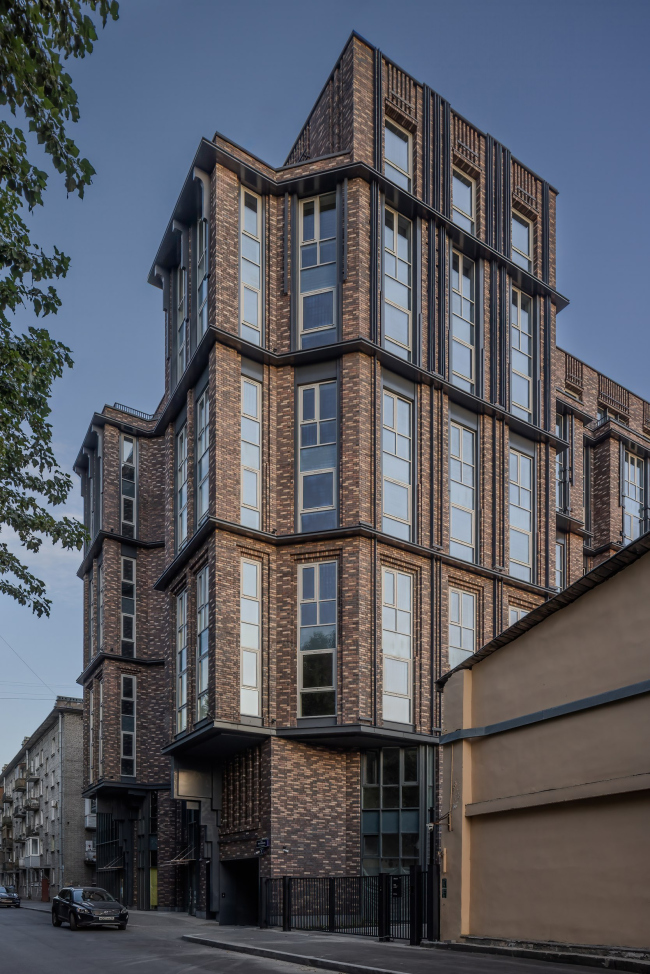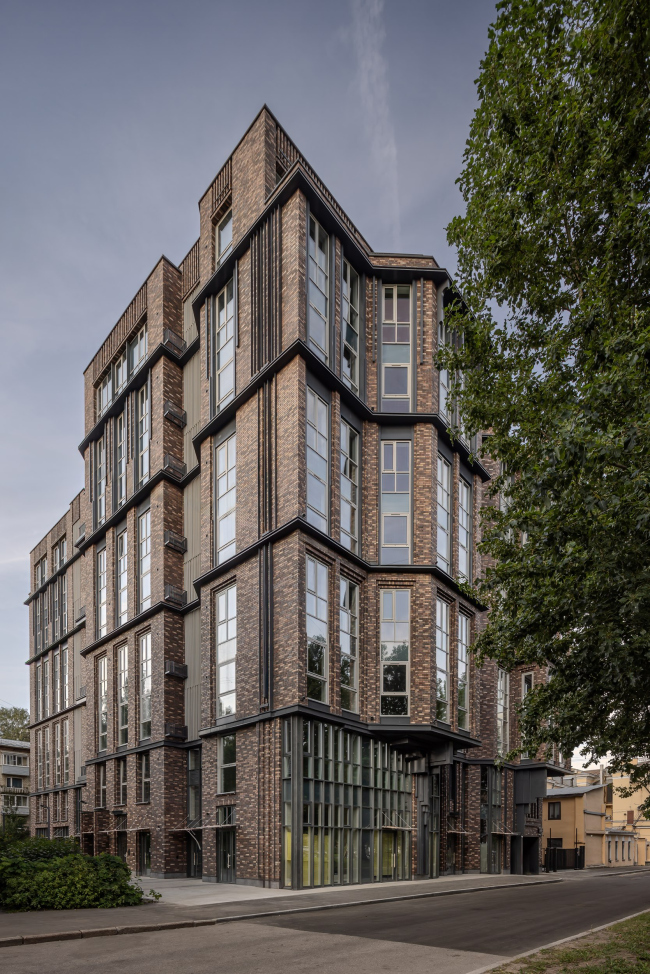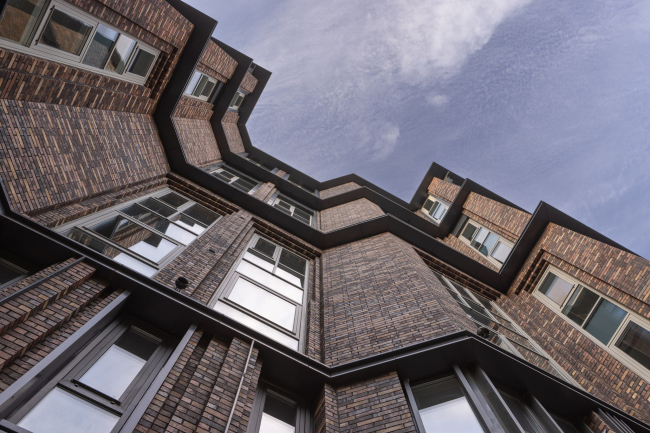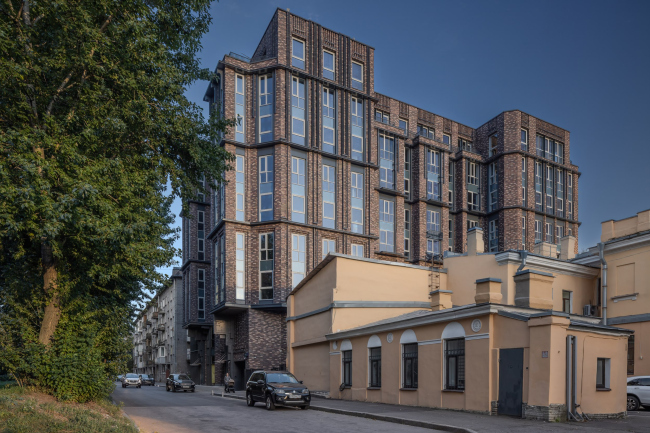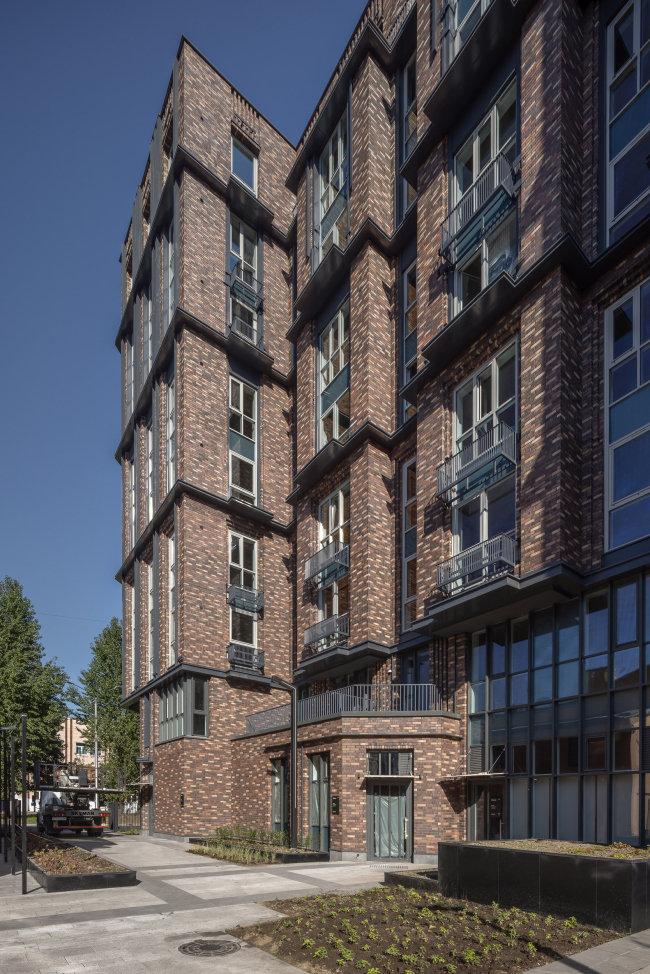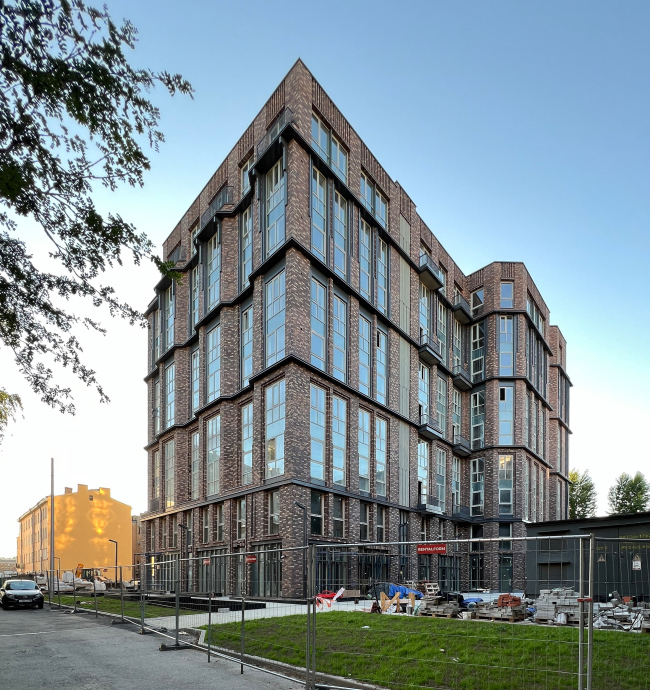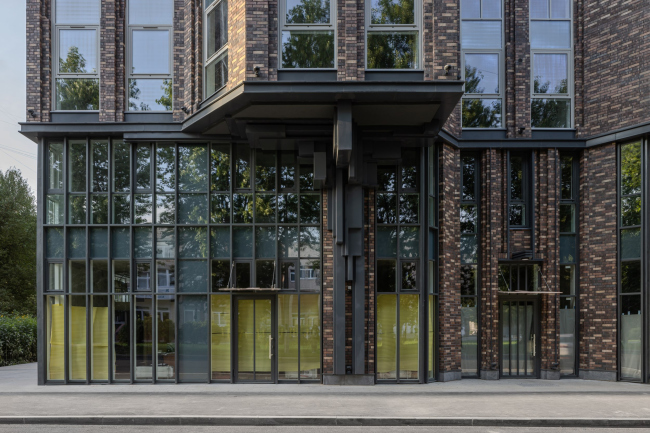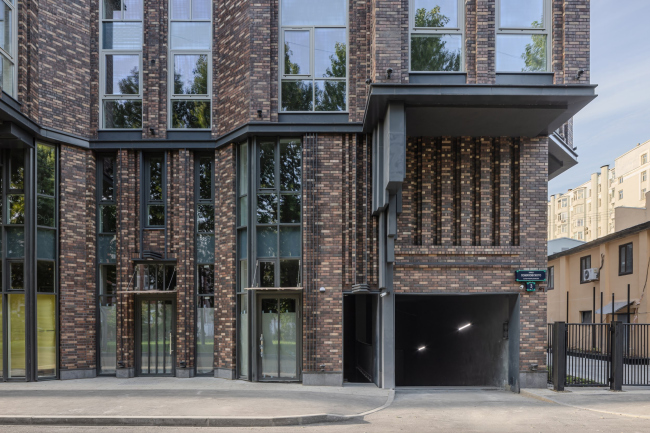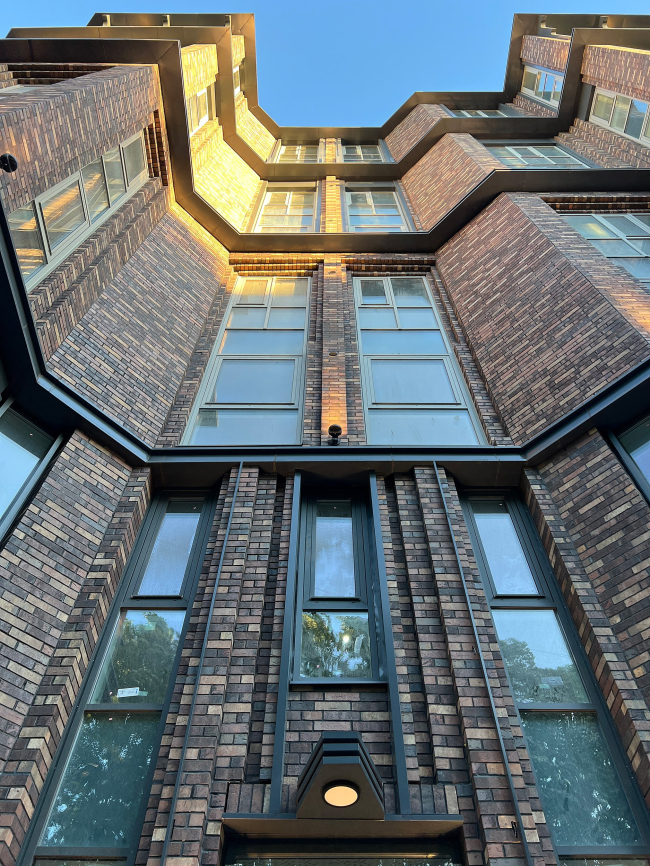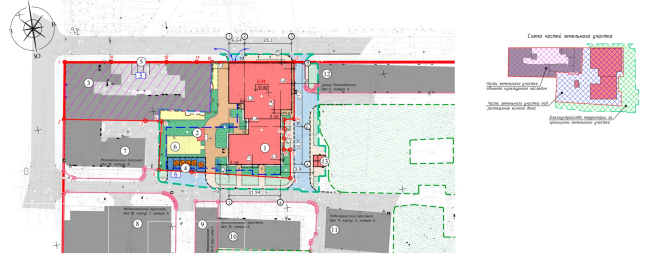|
Published on Archi.ru (https://archi.ru) |
|
| 07.10.2024 | |
|
Depths of the Earth, Streams of Water |
|
|
Alyona Kuznetsova |
|
| Architect: | |
| Stepan Liphart | |
| Studio: | |
|
In the Malaya Okhta district, the Akzent building, designed by Stepan Liphart, was constructed. It follows a classic tripartite structure, yet it’s what you might call “hand-drawn”: each façade is unique in its form and details, some of which aren’t immediately noticeable. In this article, we explore the context and, together with the architect, delve into how the form was developed. The location where the Akzent building stands is quite remarkable for the concentration of urban phenomena from various eras, and yet it unmistakably preserves the spirit of St. Petersburg, which can’t be defined solely by its grand avenues. For instance, when residents step outside onto Pomyalovsky Street, they will see the remnants of the earthen bastions of the Nyenschantz Fortress. At least, that’s what Wikimapia claims: archaeologists suggest, and simple comparison of the fortress plan with a modern map supports, that the elevated terrain relative to the street is a reminder of the first fortifications on St. Petersburg’s land. Akzent housing complexCopyright: Photograph © Olga Alekseenko / provided by Liphart ArchitectsThe structure of the Akzent is simple at its core but complex in its details. The design is based on an average historic St. Petersburg building, featuring a base, slightly differentiated residential floors, and an attic. This “grid”, accentuated by inter-floor cornices, extends across all four facades. Yet each façade represents a variation on a stylistic theme: the hierarchy of facades is not immediately apparent, and together they form a unified statement. Given the inherently dense nature of the development, this is quite an unexpected approach. It’s also important to note that the building is roughly twice the height of its immediate surroundings. However, due to the division of floors into three tiers and the ribbed nature of the facades, the overall mass and height are perceived differently. The Akzent also aligns with the “Big House on the Neva” residential complex and a 14-story building from 1975 to form a rhythmic system of vertical dominants. Its orientation is also meridian, and its dark silhouette is clearly visible from the Neva River and the Bolshoy Okhtinsky Bridge. Looking at a wider river panorama, the Akzent acts as a counterpart to the “Four Horizons” building. Upon closer inspection, many details come into view, most of which, as previously mentioned, are the result of the architect’s personal touch. All the facades were hand-drawn by the architect himself and realized close to his original vision. This eliminates mechanical repetition and makes the building feel human – crafted by a person with people in mind. Take, for example, the middle section of the building – three tiers of double-height floors. At first glance, they appear identical, but a keen observer will notice slight variations, akin to entasis: the brick wall mass seems to “melt away” toward the upper tiers, gradually being replaced first by metal inserts and then by glass. Contrapuntally, there are “cascades” of metal slats reminiscent of stylized waterfalls: on the upper floors, the flow is more substantial, strengthened by brackets, while on the lower floors, it almost turns into a delicate “spring drip”. Additionally, the cornice cross-section changes from the lower to the upper floors – it becomes wider, though the difference is nearly leveled out due to perspective. The variegated brickwork is further complicated by “fluted” inserts at the attic and base levels. Akzent housing complexCopyright: Photograph © Olga Alekseenko / provided by Liphart ArchitectsAnother defining feature of the building is the variety of niches and projections. The so-called “main” southern façade facing Pomyalovsky Street is the richest in plastique and even adopts some baroque characteristics: it’s shaped by two columns of prominently protruding bay windows and a deep niche between them, which houses the main entrance. One of the bay windows is offset by the width of a window toward the Neva, creating a wave-like line. Akzent housing complexCopyright: Photograph © Olga Alekseenko / provided by Liphart ArchitectsAkzent housing complexCopyright: Photograph © Olga Alekseenko / provided by Liphart ArchitectsThe façade facing the Neva is more brutal: beneath the protection of two massive risalits are three rows of bay windows, twice as narrow as those on the previous façade. Akzent housing complexCopyright: Photograph © Olga Alekseenko / provided by Liphart ArchitectsAkzent housing complexCopyright: Photograph © Olga Alekseenko / provided by Liphart ArchitectsThe two remaining facades, overlooking 1960s-era buildings and their green courtyards, calm the wave-like motion down to a gentle ripple. The double-height windows here take on a more classicist character. However, as you move closer to the “baroque” façade, the plasticity and mass once again increase. Akzent housing complexCopyright: Photograph © Olga Alekseenko / provided by Liphart Architects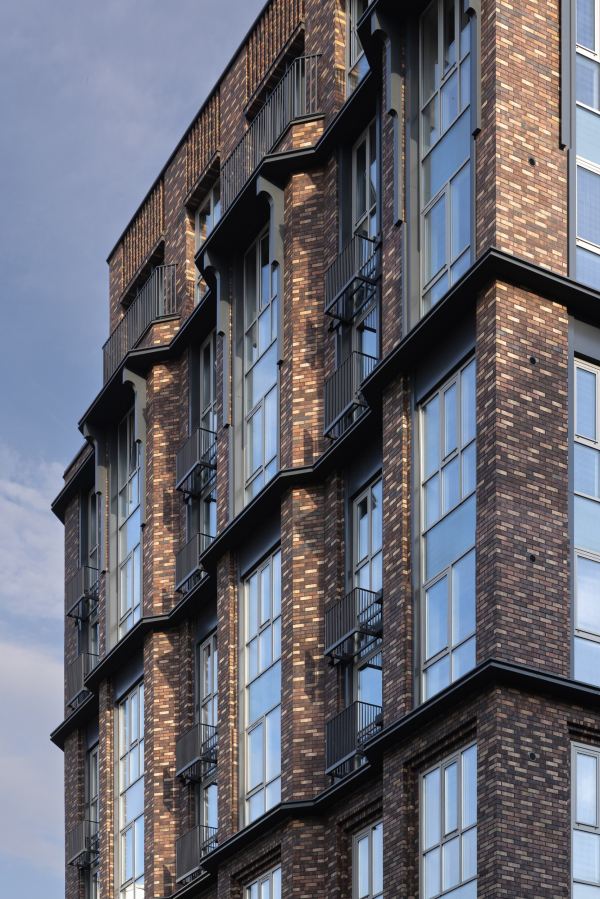 Akzent housing complexCopyright: Photograph © Olga Alekseenko / provided by Liphart Architects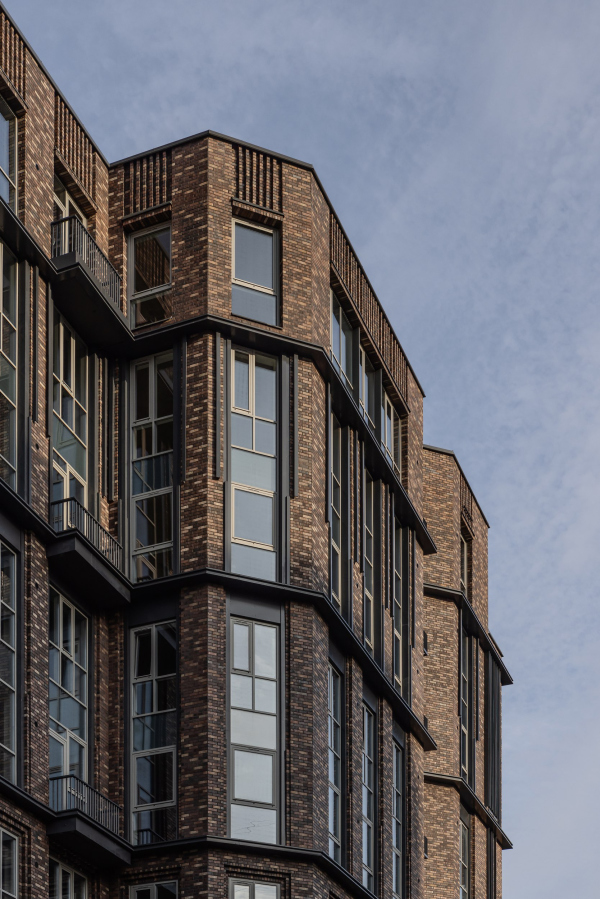 Akzent housing complexCopyright: Photograph © Olga Alekseenko / provided by Liphart Architects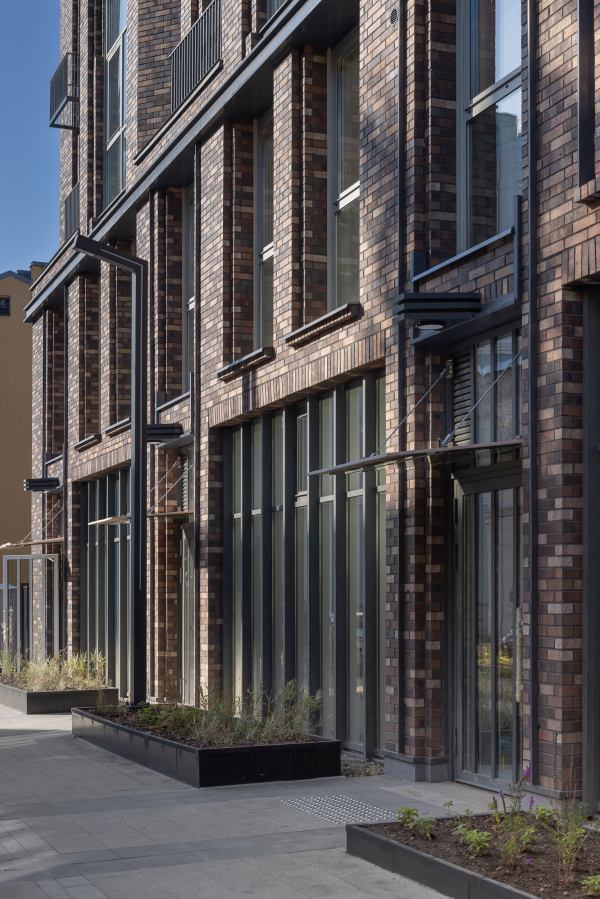 Akzent housing complexCopyright: Photograph © Olga Alekseenko / provided by Liphart ArchitectsStepan Liphart paid special attention to detailing the base of the building, which unites the commercial and first residential floors, since this section is at eye level. The corner of Pomyalovsky Street is particularly striking: the stained glass may reference Joseph Paxton’s Crystal Palace, while the inverted architectonic elements, which Liphart calls Atlantes, harmonize with their role as geometrized cantilevers. In these views, I can see something fairy-tale-like and nature-inspired: a cave hidden behind a curtain of water, with stalactites and walls glimmering with smoky quartz crystals. The parking entrance, elegantly framed by the same stalactite-like architectonic screen – essentially an entrance to the underground – distinctly resembles the mouth of a cave. Akzent housing complexCopyright: Photograph © Olga Alekseenko / provided by Liphart ArchitectsAkzent housing complexCopyright: Photograph © Olga Alekseenko / provided by Liphart ArchitectsThe “greenhouse” glazing motif carries over to the other facades. The entrances to the residential lobbies are differentiated from those of the commercial spaces by canopies, lit with special trapezoidal lamps. The design of the lobbies and common areas was handled by Moscow-based Studio 211. Akzent housing complexCopyright: Photograph © Olga Alekseenko / provided by Liphart ArchitectsAkzent housing complexCopyright: Photograph © Stepan LiphartThus, the building stands like an “island” within the block, displaying its virtues without false modesty or arrogance. Even though it is set back from Pomyalovsky Street, it is surrounded on all sides by open space to varying degrees, allowing a full view of all the details. Moreover, two small promenades are formed – one open, on the side of the existing courtyard, and the other closed, on the side of the Kokorev house wing. The landscaping of these spaces is being carried out by Derevo Park. Akzent housing complexCopyright: © A-Architects and OOO ITs “Stroyexpert”The building contains a total of 106 apartments, ranging from 36 to 139 square meters, with a roughly equal ratio of large and small units. Ceiling heights are three meters on standard floors, and slightly higher on the first and top floors. Given that the surrounding area consists mostly of low-rise buildings, many of the apartments offer scenic views of the Neva River and the Smolny Cathedral. There are terraces on the top floor, as well as one on a ground-floor apartment. 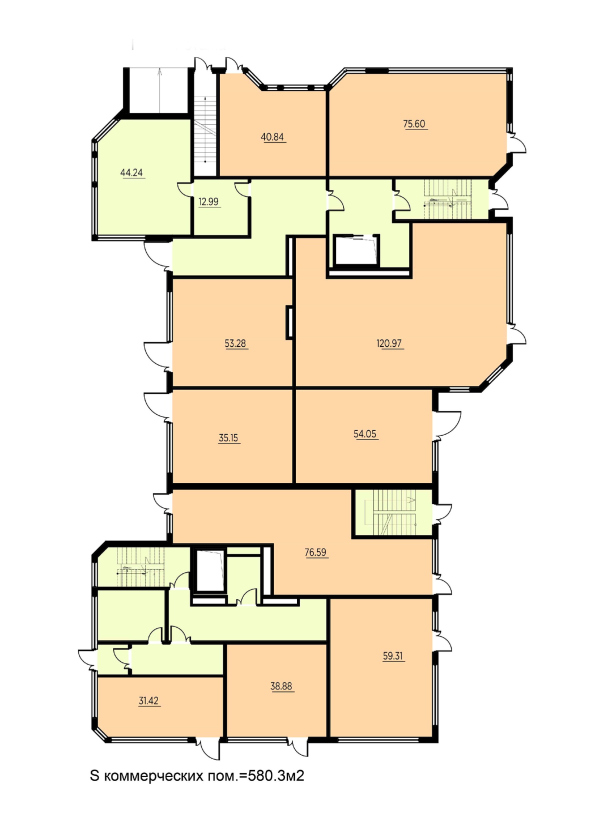 Akzent housing complexCopyright: © A-Architects and OOO ITs “Stroyexpert” Akzent housing complexCopyright: © A-Architects and OOO ITs “Stroyexpert”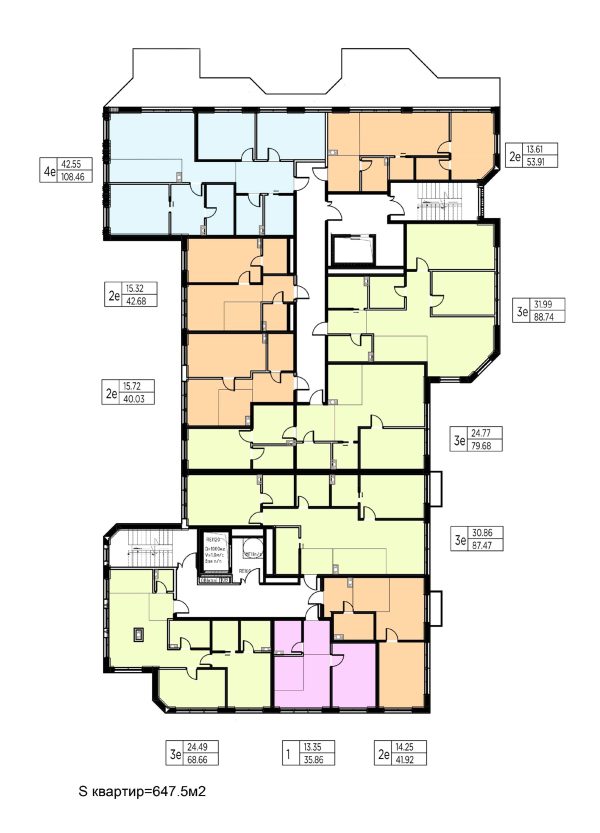 Akzent housing complexCopyright: © A-Architects and OOO ITs “Stroyexpert” Akzent housing complexCopyright: © A-Architects and OOO ITs “Stroyexpert” Akzent housing complexCopyright: © A-Architects and OOO ITs “Stroyexpert”The building has undoubtedly become a defining feature for its neighborhood. Some may argue that the contrast between the stained glass, hand-molded brick, Art Deco elements, and the gray walls of the neighboring building is too stark. But, first, we know of even more striking examples of such contrasts – such as on Institutsky, 16. And second, Akzent stands out from its neighbors not so much due to expensive materials but rather because of its individuality, passion, and even a certain degree of reflection – traits that cannot be faulted. Considering the fact that the entire area is bound to undergo significant changes due to the presence of the headquarters of one of the world’s wealthiest companies, it seems that this new building sets a quality benchmark for those future transformations. This benchmark is not about height or expensive materials but rather about the quality of the design work, the architect’s attention to detail, rhythm, form, and proportions. It is in this spirit that one would hope to see further developments in the area, which, after all, is part of the city center. 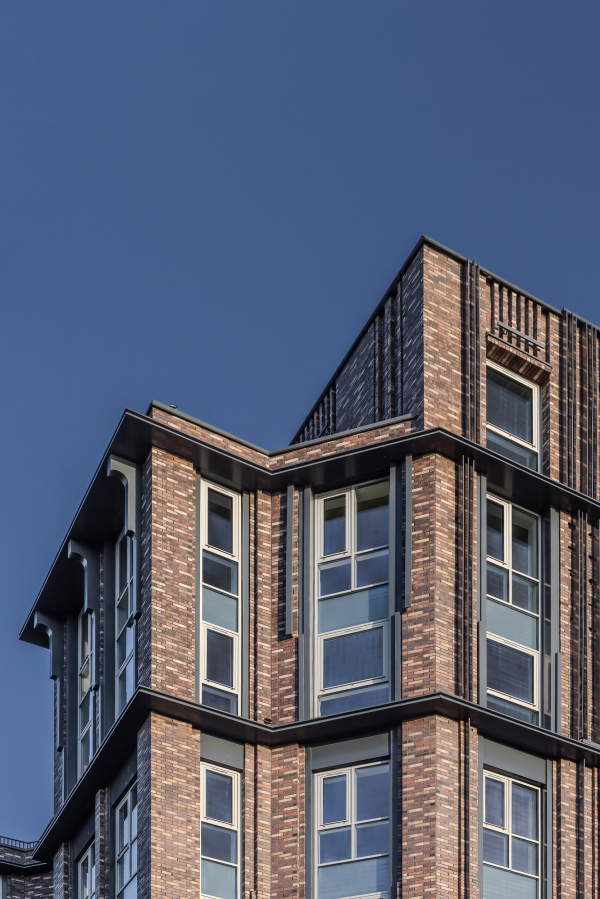 Akzent housing complexCopyright: Photograph © Olga Alekseenko / provided by Liphart Architects Akzent housing complexCopyright: Photograph © Olga Alekseenko / provided by Liphart Architects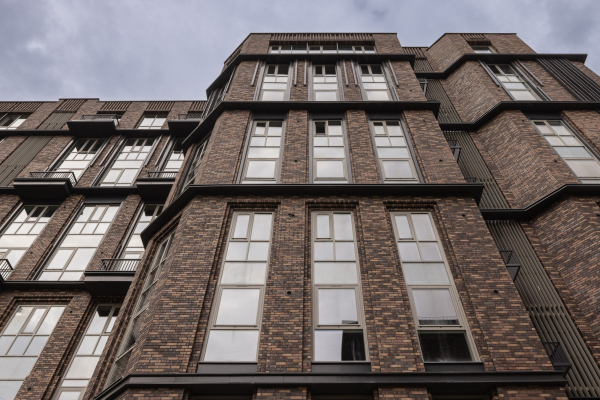 Akzent housing complexCopyright: Photograph © Olga Alekseenko / provided by Liphart Architects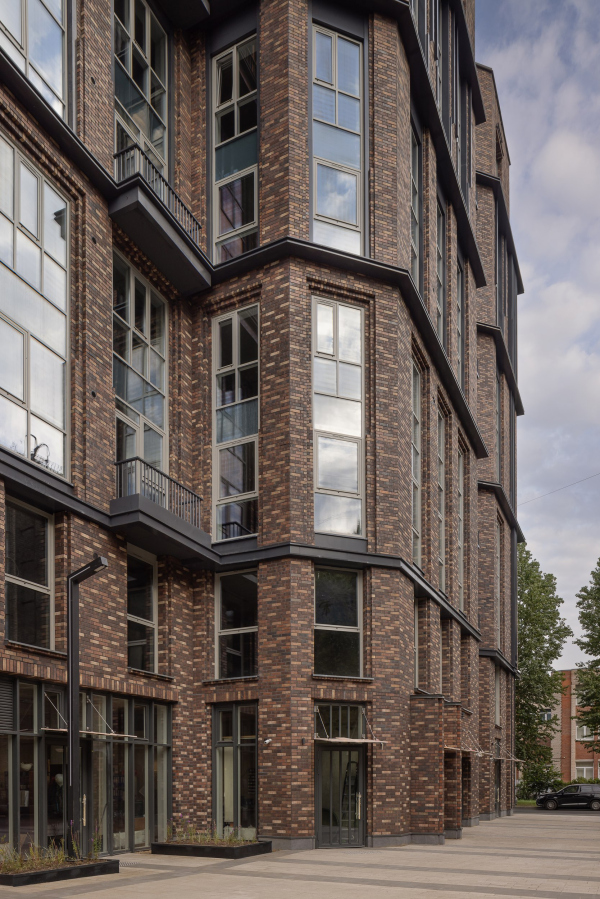 Akzent housing complexCopyright: Photograph © Olga Alekseenko / provided by Liphart Architects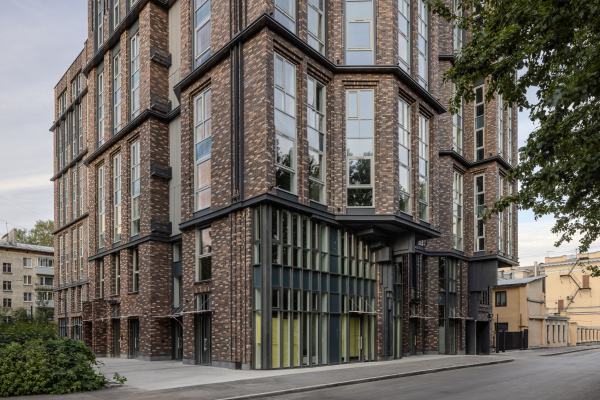 Akzent housing complexCopyright: Photograph © Olga Alekseenko / provided by Liphart Architects |
|
